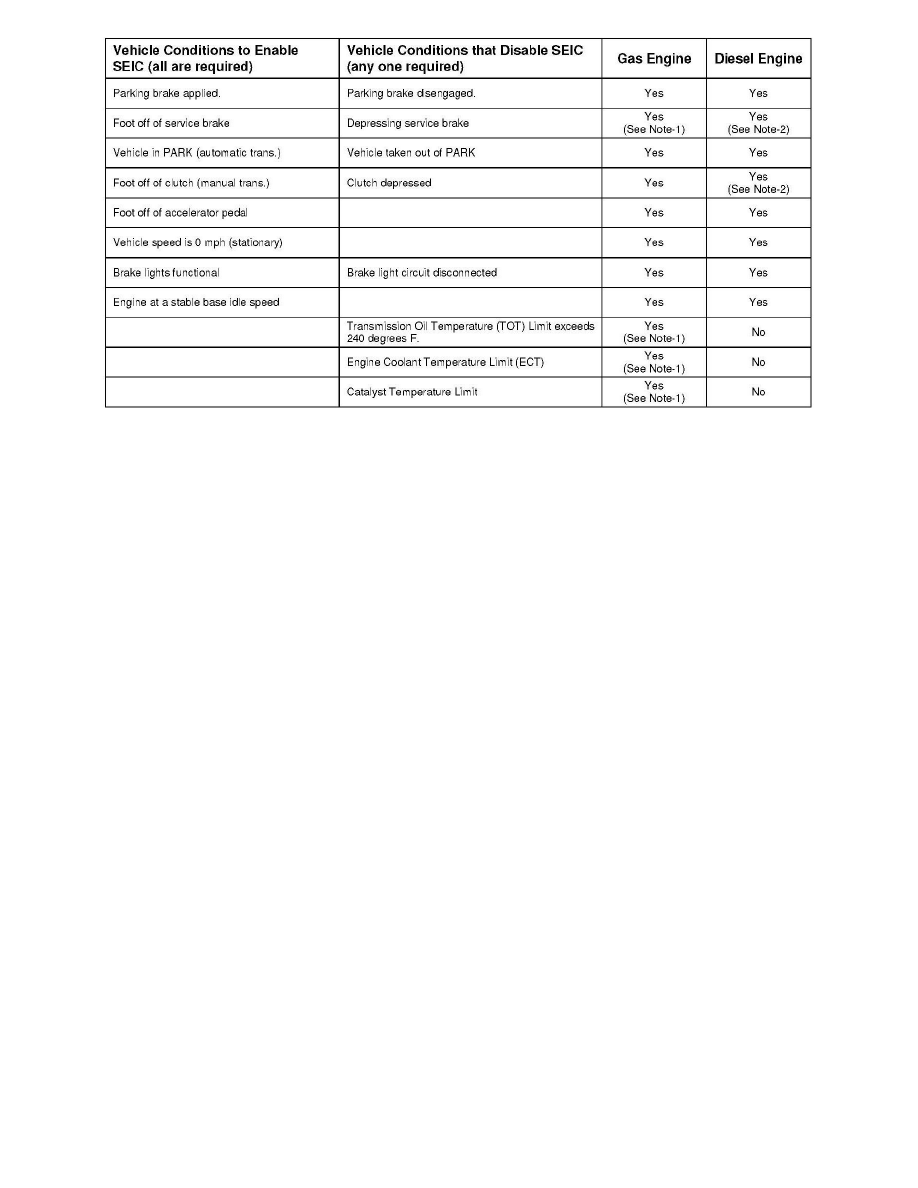F 350 4WD Super Duty V8-6.4L DSL Turbo (2008)

Note-1: A "change-ot-state" at the "PTO-Request" circuit is required to re-invoke SEIC.
When a disabler is seen by the PCM the PTO-Indicator circuit changes trom ground-source to open-circuit. Atter approximately 3 seconds SEIC drops
out, returning the engine speed to base idle. For vehicle-stationary operation, the automatic transmission torque converter unlocks as engine speed drops
below 1200 rpm. To re-initiate SEIC the operator must turn ott the attermarket PlO switch (removing command voltage to the "PT0-Mode" circuit) and
turn it back on again.
Note-2: SEIC is automatically re-activated after approximately 3 seconds atter the disabling condition is removed.
SEIC / PTO - General System Behavior
To guarantee tull advertised torque capability at the automatic transmission PlO gear and through the attermarket PlO clutch, the transmission torque
converter must be locked, and the hydraulic line pressure serving the attermarket PlO clutch must be elevated. Applying battery voltage to the PlO circuit
is the signal to the transmission to enter SEIC strategy and command these two important tunctions. This applies to both stationary and mobile PlO
operations.
If an SEIC disabler occurs:
- GAS engines will require a change-ot-state, meaning the operator is required to turn ott voltage to the PTO-Request circuit, and back on again
to re-invoke SEIC and PTO operation.
- DIESEL engines do not require a "change-ot-state" at the "PTO" circuit. Once the disabling condition is removed, the strategy re-invokes
SEIC atter approximately 3 seconds, automatically returning the engine speed back to what was commanded by the operator prior to the
disabling condition.
Battery Charge Protection (BCP): A diesel-only tunction. When it is switched on the engine speed goes immediately to 1200 rpm, and stays there even it
the battery is tully charged. From this state it uses system voltage as well as ambient air temp., engine oil temperature intormation to raise engine speed
higher to maintain a certain battery charge. Maximum engine speed in BCP mode is 2400 rpm. The BCPSW circuit may be wired to circuit to
Ignition-Hot-in-Run to make it automatic for ambulance. Park-Brake-Set is one ot the enablers ot BCP.
If the Transmission Oil Temperature (TOT) sensor reaches 240°F, then the Torqshift torque converter may disengage, preventing torque trom being
delivered to the transmission PTO gear.
SEIC/PTO strategy tunction in the PCM is not attected by the loss ot vehicle battery electrical power.
SEIC Ramp Rate (fixed, not programmable):
- GAS engines: 400 rpm/second.
- DIESEL engines: When tirst applying battery voltage to the PTO circuit the PCM directs the engine to go to the initial target that it sees at the
RPM circuit at 200 rpm/second (1200 rpm it there is no resistor in the RPM circuit - open circuit). It resistance is subsequently changed at the
RPM circuit then the ramp rate to this second speed target is virtually instantaneous (as tast as the diesel engine can get there).
Correlation between engine speed and resistor values:
